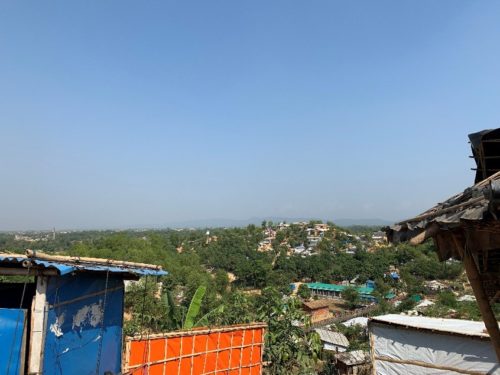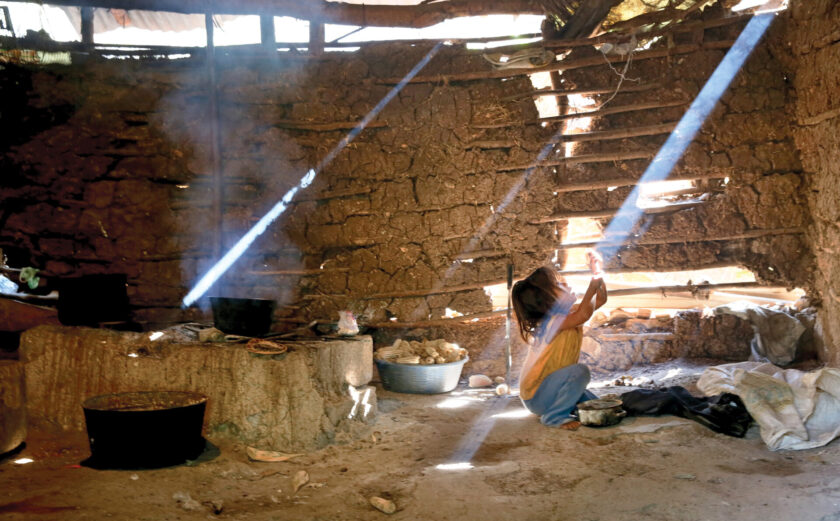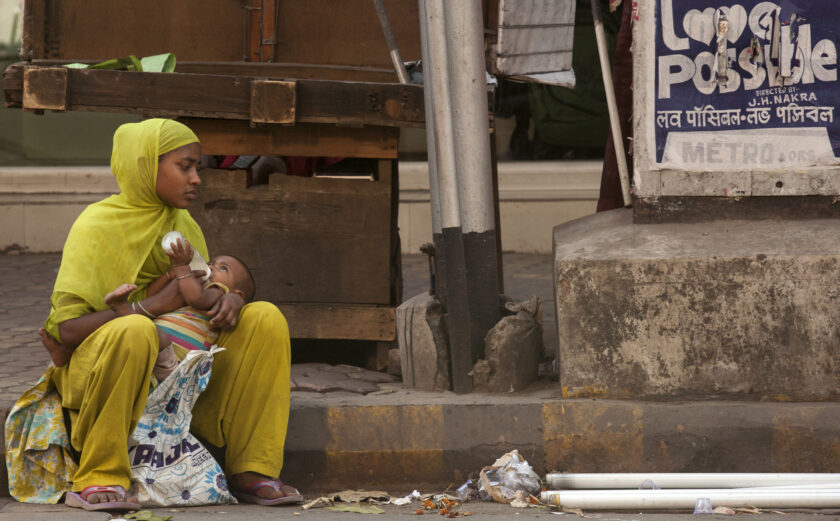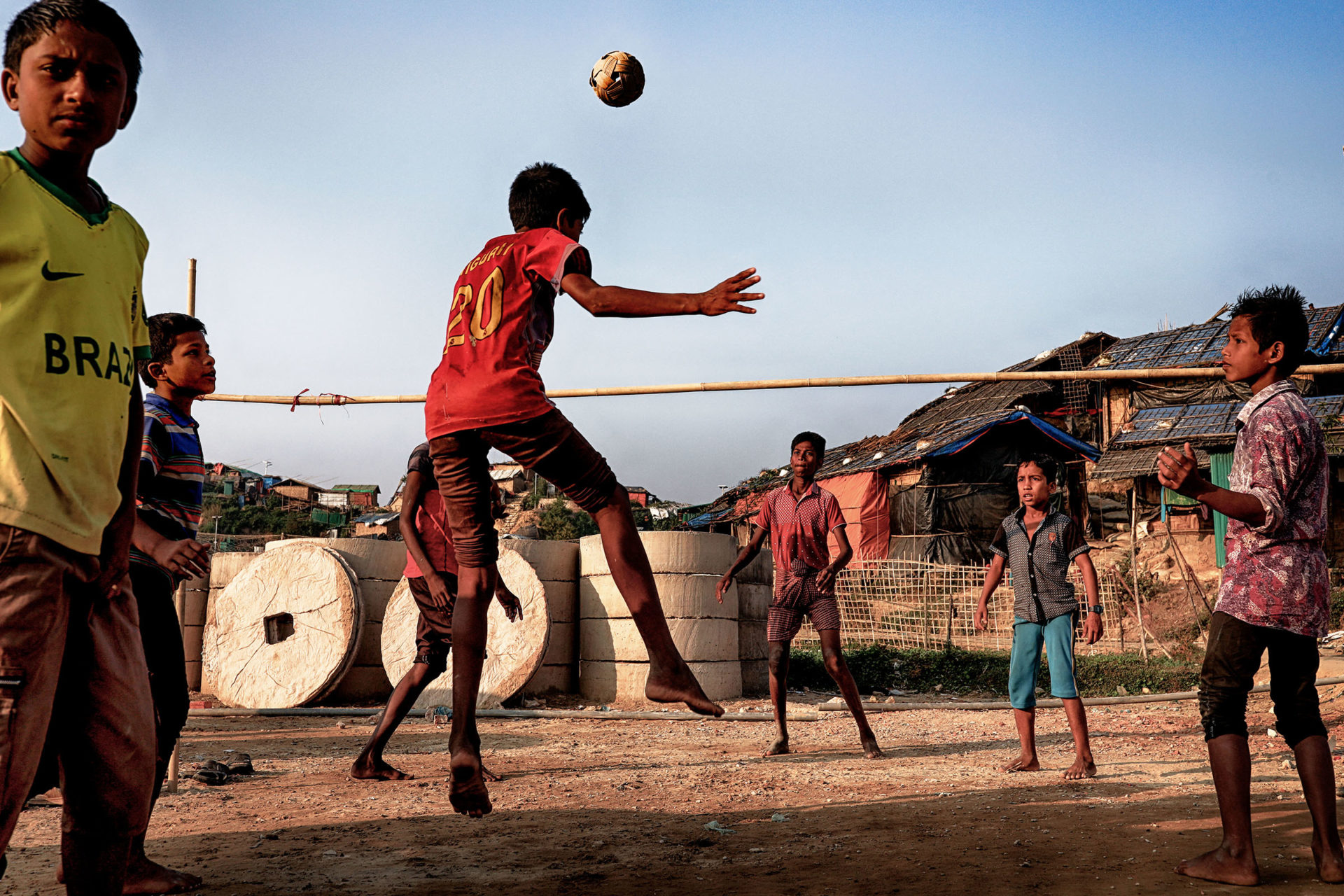
Five things you should know about the Rohingya Refugee Response
“Hello!” “Hello!” Rohingya children greet us as we walk through the dusty brick roads and dirt paths of the world’s largest refugee camp.
Located a two-hour drive from Cox’s Bazar—a famous Bangladeshi beach resort town—through congested roads replete with potholes, the camps provide safety for nearly 1 million Rohingya Muslims who have fled widespread, systematic human rights violations in Rakhine state of neighboring Myanmar.
In early December, InterAction’s President and CEO, Sam Worthington, along with InterAction’s Board Chair and CEO of Project Concern International, Carrie Hessler-Radelet, traveled to Bangladesh and visited humanitarian programming in the Rohingya camps. InterAction’s Vice President for Humanitarian Policy and Practice, Patty McIlreavy, Vice President for Membership and Public Engagement, Carolyn Aeby, and Aliza Vaccher, Program Associate for Humanitarian Policy and Practice also participated in the mission.
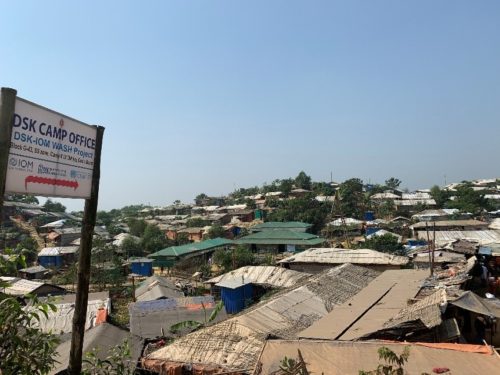
Below are five things you should know about the Rohingya Refugee Response:
1. Numbers
925,000 Rohingya Muslims currently reside in Bangladesh as refugees—the largest refugee population in the world. More Rohingya live as refugees than continue to live in Myanmar. Most of those refugees live near Ukhia in Cox’s Bazar District.
The scale of this displacement makes the Rohingya camps the largest in the world.
The camps—which are situated in a rugged, hilly region—are prone to flooding and landslides, particularly during the rainy Monsoon season. This makes for extremely difficult living conditions for refugees and humanitarians providing assistance. To mitigate some of these risks, brick roads through the camps have been constructed to better withstand monsoons, and many shelters include concrete foundations. However, overcrowding increases the likelihood that infectious diseases will spread. Humanitarian programming, such as a chlorinated water supply system and the provision of latrines, helps in mitigating these challenges.
Despite impressive efforts from the international humanitarian community, the nearly 1 million displaced Rohingya remain almost entirely dependent on humanitarian aid for survival.
2. Role of Local Communities and Rohingya Volunteer
Rohingya refugees residing in the camps, alongside Bangladeshi citizens from surrounding local communities, play a critical role in maintaining the humanitarian response. Rohingya refugees work alongside local Bangladeshis and international staff as teachers, health workers, community mobilizers, and more. These volunteers are paid a small stipend for their work; however, the Government of Bangladesh has recently increased efforts to limit cash-based aid.
Because Bangladesh forbids legal employment for Rohingya refugees, small cash-for-work opportunities provide refugees with vital income-earning opportunities, which, if taken away, would cause significant negative impacts on the livelihoods of Rohingya residing in Bangladesh.
3. Fear of Return
Trends for the Rohingya in Rakhine State do not show signs of improving, and Rohingya still living in Myanmar still face dangerous conditions and imprisonment. In November 2019, The Gambia filed a lawsuit at the International Court of Justice in The Hauge, Netherlands, accusing Myanmar of genocide. The first phase of the legal process—the first free and fair trial for the Rohingya community—was completed on December 12, though the outcome remains uncertain.
The world will continue to watch the proceedings. However, without a sustainable solution from the Government of Myanmar, it is unlikely that Rohingya refugees will feel safe to return soon. That refugee returns are voluntary (non-refoulement) is a key tenet of international refugee law. As the Government of Bangladesh continues to push for repatriation, it is imperative that any Rohingya returns to Myanmar are conducted in a safe, dignified, and voluntary manner.
4. Bhasan Char Island
Bhasan Char Island, a shifting silt island in the Bay of Bengal, is at the center of a plan from the Government of Bangladesh to transfer up to 100,000 refugees from the overcrowded camps near Cox’s Bazar. The idea has received a great deal of international criticism, as the island is isolated and subjected to frequent floods and cyclones. In October 2019, the Bangladeshi Government announced that an approximate 350 families had volunteered to be relocated to the island (though concerns persist about the true voluntary nature). Despite claims by the Government of Bangladesh that the island is safe, habitable, and has been secured with embankments, humanitarian organizations and human rights groups remain concerned.
Health and safety on the island are a significant concern, as the island is accessible only by a three-hour boat ride. Many NGOs have emphasized the difficulties and risks that would be associated with evacuating thousands of people from the island in the likely event of a natural disaster. While plans are now on hold pending site visits by U.N. agencies, approximately 1400 barracks and 120 cyclone shelters have been constructed on the island, signaling the Bangladeshi Government’s commitment to the plan.
5. Protracted Crisis
Already in its third year, the Rohingya refugee crisis is likely to become protracted and humanitarian needs are expected to remain high for the foreseeable future. Continuous funding is required to meet the needs of affected populations. In 2018, a total of $950.8 million USD was requested in the Joint Response Plan for the response. Of this, $812.7, or 83.7%, was received.
Comparatively, in 2019, a similar $920.5 million USD was requested in the Joint Response Plan. However, as of December 2019, only $635.3—69%—has been received. This 14.7% drop in funding reflects a global shift in attention away from the continuing humanitarian crisis. To ensure humanitarian organizations can continue to provide the lifesaving aid that the majority of Rohingya rely upon almost entirely, the international community must continue to prioritize funding for this response.
